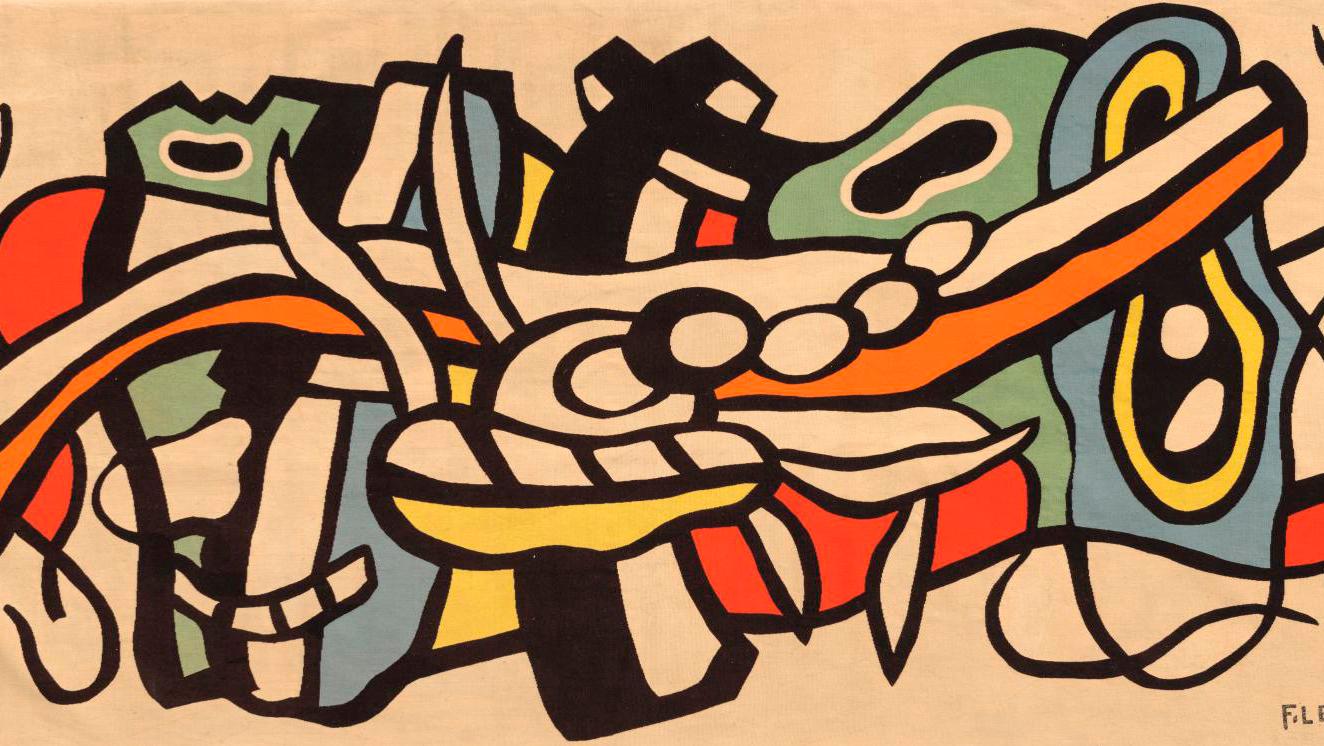In the artistic effervescence of the last century, tapestry was not forgotten. In Aubusson in particular, workshops multiplied thanks to the new consideration from artists for the weavers’ know-how.
Aubusson Tapestry Factory, according to Fernand Léger (1881-1955), Abstract Composition, tapestry in six-color wool using a model of the artist for a 1953 mural, woven on a low-warp loom in the workshop of Tabard Frères et Sœurs in 1962, 195.5 x 394 cm (77 x 155 in).
Paris, Hôtel Drouot, February 23, 2021. Ader. © Ader
Result: €128,000
At the turn of the 20 th century, the meticulous experiments of the Arts & Crafts movement and the Nabis soon became emulators. Throughout Europe, private workshops emerged that no longer considered tapestry as a wall ornament, but rather as a mobile fresco on which the idea of depth can be explored without the linear perspective. The visual treatment of modern art is remarkably suited to the moving flexibility of a fabric that fits, almost better than the canvas, the ideal of artists regularly invited to supply cartoons to tapestry factories. In an effort to join modernity, the French national workshops went in a new direction thanks to the iconic efforts of Antoine-Marius Martin, director of the École nationale des arts décoratifs in Aubusson from 1917 to 1930. Torn between the legacy of a medieval practice reimagined in the nineteenth century and the pragmatic questions of economy, the collaboration between artist and craftsman…
com.dsi.gazette.Article : 35302
This article is for subscribers only
You still have 85% left to read.
